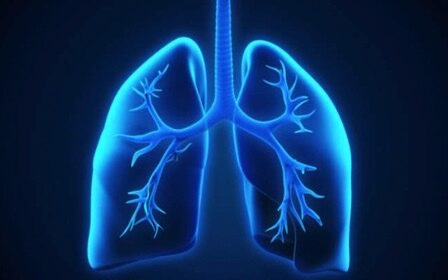Newly discovered cell type in human lungs

ANNIE PATEL – A new, regenerative cell type called respiratory airway secretory cells (RASCs) was discovered by researchers at the University of Pennsylvania School of Medicine. This novel discovery plays a significant role in better understanding how the respiratory system and human lungs function overall. It is especially beneficial by relating the cell’s physiological function to lung diseases and infections such as chronic obstructive pulmonary disease (COPD) and other smoking-related diseases.
Specifically, this cell is located in the respiratory zone, which is the region of the respiratory system containing the respiratory bronchioles and the alveolar ducts. In these regions, air travels through the lungs to engage in gas exchange: the transfer of oxygen and carbon dioxide from the alveoli to the blood. This process is essential for supplying oxygen to the rest of the body. As a result, the discovery of a new cell in this area is both intriguing and beneficial for future studies. This cell is found in a location that is difficult to study because respiratory bronchioles are not found in mice models. Researchers confirmed that this cell type is not found in any other regions of the mouse lungs.
The role of RASCs is to “regenerate other cells that are essential for the normal functioning of alveoli” and “produce proteins needed for the fluid lining of the airway.” Thus, due to its supportive functions, understanding the relationship RASCs have with other cells is important. The researchers discovered that RASCs and AT2 cells are connected because they share genes and have similar expression patterns. AT2 cells are known to be damaged and “become abnormal in COPD and other lung diseases,” so because RASCs are supportive cells to AT2 cells, research and manipulation of this cell type can serve as a form of treatment to those with COPD and lung disease.
COPD and other lung diseases are prevalent and widespread in the United States. Despite some forms of treatment, there is no cure for COPD making it a leading cause of death in the country with Georgia being a state with a high COPD death rate. As a result, the study and implementation of this cell type will be critical for future COPD and lung disease care.
Links:
https://www.sciencedaily.com/releases/2022/04/220401122222.htm
https://www.nature.com/articles/s41586-022-04552-0
https://www.cdc.gov/copd/index.html
Copy Editors: Sohawm Sengupta and Elizabeth Conner
Photography Source: https://www.tribuneindia.com/news/health/after-cosmetics-and-blood-now-scientists-detect-microplastics-in-lungs-385212
